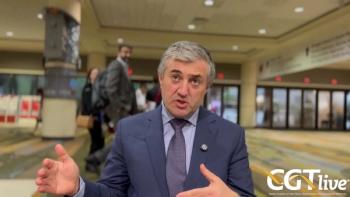
Sharon Hesterlee, PhD, on Unprecedented Progress in Muscular Dystrophies
The chief research officer, Muscular Dystrophy Association, shared a message for Duchenne Action Month.
“I think the message is that we're moving into the treatment era. For so long, we were just at a stage where we could diagnose people and follow them. And now we're actually at the point where there are treatment options, and there are going to be treatment options available for many people. So it won't be a case of, if your exon matches this drug, there's a treatment, I think we're going to have enough variety of options that everyone is going to have the potential to benefit. So, I think it's very exciting. The big challenge for us as a community is figuring out, how do we make that work?”
September is Duchenne Action Month, and while 2023 has seen lots of progress in the treatment landscape of the field, including the summer approval of delandistrogene moxeparvovec (marketed as Elevidys by Sarepta), the field’s first gene therapy, more work always remains to be done.
CGTLive spoke with Sharon Hesterlee, PhD, chief research officer, Muscular Dystrophy Association (MDA) to learn more about the changing treatment landscape of Duchenne muscular dystrophy (DMD) and other dystrophies. She shared her perspective on how the landscape has continued to evolve and unmet needs that remain to be addressed in improving outcomes for patients with muscular dystrophies. She noted that 2023 was a turning point for the field with the FDA approval of Elevidys and that the landscape is entering its “treatment era” as opposed to management. She also shared her belief that continued work and research in the field will soon lead to treatment options for patients with many kinds of rare dystrophies.
REFERENCE
Sarepta Therapeutics announces FDA approval of ELEVIDYS, the first gene therapy to treat Duchenne muscular dystrophy. News release. Sarepta Therapeutics. June 22, 2023. https://investorrelations.sarepta.com/news-releases/news-release-details/sarepta-therapeutics-announces-fda-approval-elevidys-first-gene
Newsletter
Stay at the forefront of cutting-edge science with CGT—your direct line to expert insights, breakthrough data, and real-time coverage of the latest advancements in cell and gene therapy.




































